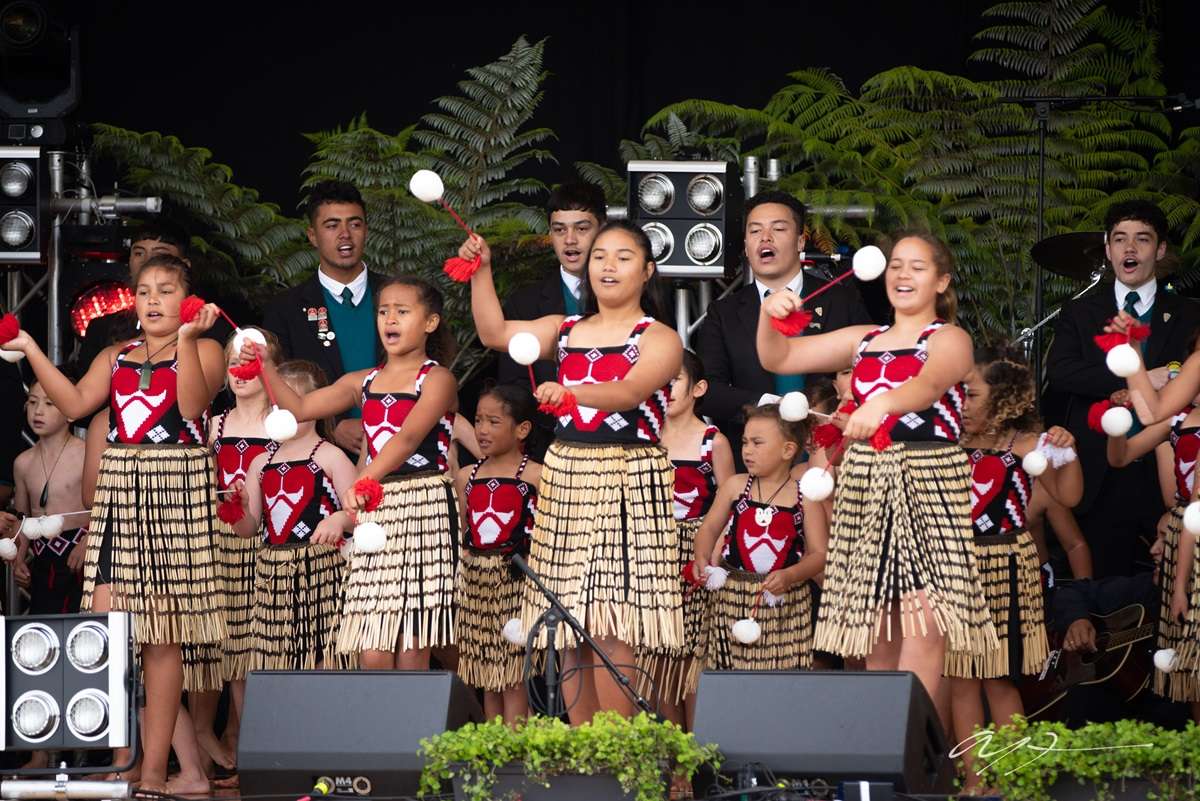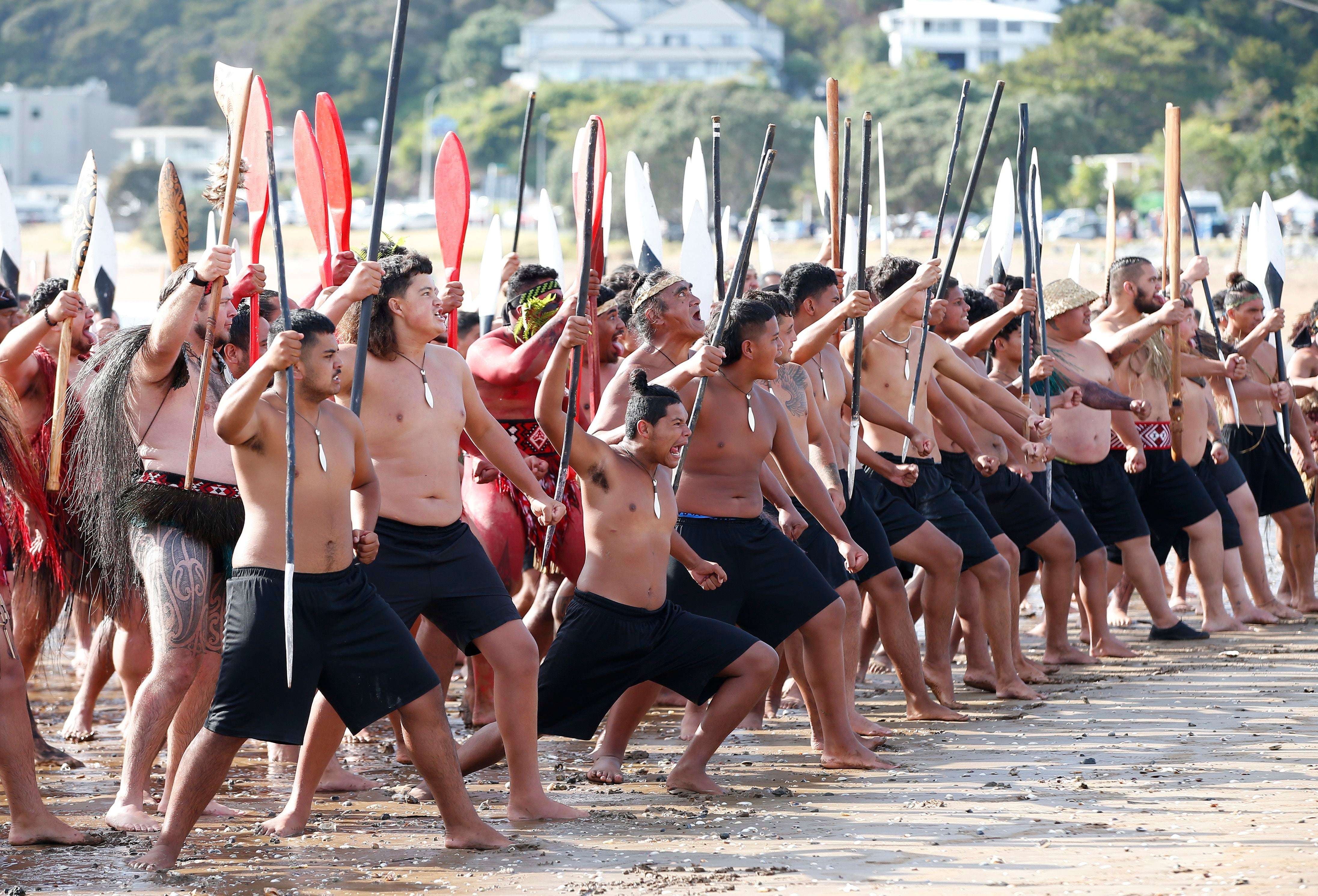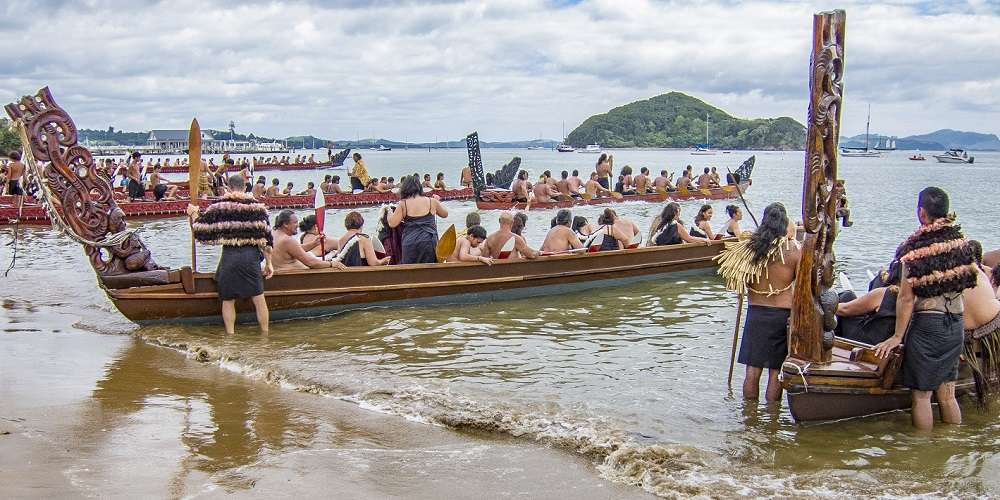When Is Waitangi Day: Every year on February 6, people celebrate Waitangi Day to remember when the Treaty of Waitangi was signed, which laid the groundwork for New Zealand’s past. New Zealand’s government has declared February 6 a public holiday in honor of this important day. If the 6th happens on a Saturday, the public holiday is on the following Monday.
There are events all over the country and at the Waitangi Heritage Site to help people remember when the treaty was signed. These events show how united New Zealanders are in protecting the Treaty of Waitangi agreements and values.
There are many activities at the events that show how rich and complicated the country’s cultures are. Today is a day for celebrations, getting to know each other, thinking about the past, giving out government prizes, and both official and informal events. Not only does Waitangi Day honor an important historical event, but it also gives New Zealanders a chance to celebrate their shared heritage, which strengthens their sense of national identity.

History of Waitangi Day
New Zealand’s national holiday, Waitangi Day, gives people a much-needed break from their normal work schedule. The country’s laws make it a national holiday, but it’s also a time to think about the problems that happened with the Treaty of Waitangi in the past and how it still affects people today.
It was signed for the first time on February 6, 1840, by more than forty Mori chiefs and British Crown representatives. New Zealand’s 500 Mori chiefs had signed the pact and passed it around the country by September 1840.
This important historical document explains the main ideas that Mori leaders and British officials used to come up with a political deal to create a nation-state and a government. There have been disagreements for a long time because the English and Mori have very different ideas about how to understand the Treaty. These differences have led to arguments about things like land ownership.
In 1934, Waitangi Day was first celebrated officially. In their 1957 platform, the New Zealand Labour Party called for making it a public holiday. Through legislation, the day was made a national holiday in 1973. Even so, some people didn’t want to change the name to New Zealand Day because they thought it might take away from the importance of “Te Tiriti.” Waitangi Day became a public holiday and got a new name with the Waitangi Day Act of 1976.
Waitangi Day is celebrated with joy all over New Zealand on February 6 every year. The famous Treaty of Waitangi was signed at the Waitangi Treaty Grounds, which is a great place to learn about the treaty all year long.
Waitangi Day Celebrations
Waitangi is where most of the Waitangi Day activities happen, but events happen all over the country. A sunrise service starts the day, and then there is a social BBQ lunch. During the day, the Treaty grounds host a number of performances, such as beautiful kapa haka shows that show off Mori dancing styles. In the nearby port, traditional Mori boats called waka can be seen. Arts, crafts, and game booths add to the lively atmosphere of the event.
Similar events happen in other parts of the country, though they are smaller or bigger based on where they happen. These events that happen outside of Waitangi Day add to the joy of Waitangi Day by bringing people together and recognizing the historical importance of the Treaty of Waitangi.
How to Observe Waitangi Day
Celebrating with people from New Zealand
The Waitangi Treaty Ground is where the official celebrations of Waitangi happen. There are lots of fun things to do and speeches by public leaders. People get together in the area, and it’s also used for meetings. If you are in New Zealand at this time, you can join the celebrations. If not, you can still help by using the phrase #Waitangiday to tell your friends on social media.
Look into the historical accounts.
This day is truly special because it has a long history that goes back to when the Treaty of Waitangi was signed and the events that followed. Today, take some time to learn about how this important day has changed over the years and the activities, events, and arguments that have shaped its past.
Learn about Mori culture.
Take part in the rich history of the Mori. Find places that serve real Mori food and enjoy rare flavors. If you want to avoid trying new foods, you can learn about traditional Mori dancing and watch amazing kapa haka shows online. Accepting these cultural meetings makes the celebration of Waitangi Day more meaningful.
Waitangi Day Fast Facts
The Treaty of Waitangi was signed on February 6, 1840. It was a turning point in New Zealand’s history. It shows how big the promise was that by the end of 1840, 500 Mori chiefs had signed the pact. In 1974, Waitangi Day was made a national holiday. This was a big step toward understanding how important the treaty was.
Between Waitangi Day and New Zealand Day, the name of the event has changed several times over the years. Because of this change, people started talking about how to keep the treaty’s main points. The spot where the Treaty of Waitangi was first signed is still open to the public so people can learn more about how this important time in New Zealand’s history began.
How Do New Zealanders Celebrate Waitangi Day?
Different people have different ways of celebrating Waitangi Day. Some people celebrate it to honor Maori culture, while others like having an extra weekend. On the other hand, some people use the event to protest, which shows how complicated this important day is.
The official Waitangi Day gathering takes place around the Te Tii Marae on the Waitangi Treaty Grounds in the Bay of Islands. The mood is made more festive by official speeches and routines. Like a party, it has that feel to it. But this place is also used for meetings, which shows that people do need to agree on the Treaty of Waitangi.
A traditional Maori meal called hangi is made and eaten by communities in different parts of New Zealand. People also get together to watch kapa haka dance shows and plant trees that have special meanings. These group projects honor and show how different groups came together historically on this important day.

What is Waitangi Day and why do we celebrate it?
Every year on 6 February – Waitangi Day – people of all communities and backgrounds gather at Waitangi to commemorate the first signing of New Zealand’s founding document: Te Tiriti o Waitangi, The Treaty of Waitangi, on 6 February 1840.
New Zealand’s national holiday is Waitangi Day, which is also known as Te Rao Waitangi in Maori. It marks the signing of the Treaty of Waitangi on February 6, 1840. Many people think of this contract as the country’s founding document. It shows an agreement between Crown representatives and local Mori leaders to follow British rule.
It was first celebrated on Waitangi Day in 1934, and in 1974, it was made a public holiday. On February 6 every year, events are held at Waitangi and other places to remember the Treaty of Waitangi. Parties, Mori hui (social gatherings), official awards, historical reflections, and citizenship ceremonies are just a few of the events that make up the celebrations. Even though the event brings people together, it has also been the site of Mori activist protests and caused some controversy.
What happened on Waitangi Day 2023?
Large crowds gathered at Waitangi this morning to commemorate the 183rd anniversary of the Treaty. In karakia and prayers, politicians and other leaders challenged the country to build trust and understanding.
To mark the 183rd anniversary of the Treaty of Waitangi, which connected the Mori people to the British government, New Zealand’s political leaders got together at the Bay of Islands marae (meeting house). In an effort to keep the event from becoming too political, the hosts told the guests not to say anything too political and instead to talk about bigger ideas like nationhood and coming together. Many people were still worried about race and Indigenous rights, even though the upcoming election put shared government with Maori at the center of attention.
Prime Minister Chris Hipkins spoke to the group, even though the host tried to keep politics out of it. He said that non-Maori people have a lot to gain and nothing to fear from facing the wrongs of the past. He said that fear and mistrust still make people argue, but he also said that these problems could be solved with honesty and understanding.
What is there to do on Waitangi Day?
How to celebrate Waitangi Day
Go to a Waitangi Day ceremony or event.
Start tracing your whakapapa or family history.
Take the family along to your local library or museum to find out more about New Zealand’s history.
Read the Treaty of Waitangi and our comprehensive reference guide to the Treaty.
The Waitangi Treaty Grounds in Waitangi are where most of the Waitangi Day celebrations happen. This is where people from all over the country and towns come together every year to mark this important day. A moving dawn service will be held in Te Whare Runanga, a beautifully carved meeting house, at 5 a.m. as part of the celebrations. After the sunrise service, people all over the country and on the Treaty Grounds celebrate.
On Waitangi Day, many customs are honored, such as the vibrant dances and music performed by artists from the area. There will be ceremonies to raise the flag, a strong 21-gun salute by the Royal New Zealand Army, and dramatic water shows featuring Mori canoes (waka) and Navy ships. New Zealand’s biggest ceremonial war canoe, the famous Ngtokimatawhaorua, is the star of an amazing show of what it can do. As part of national gatherings, there are market booths, events for kids, games, picnics, and get-togethers for the whole family.
Why is Waitangi so important?
The Treaty of Waitangi is the founding document of our country. Maori agreed: to let other people live in their country; and. to let the British make rules about behaviour and see that everyone obeys them.
In 1974, the first national holiday was made official. This was a turning point that has since grown into a big event. It’s more than just a day to remember for everyone in New Zealand; it’s a celebration of who we are as a people, a country, and individuals. People are encouraged to think about their shared past, present situations, and hopes for the future during this time.
This event happens every two years and has been an important part of New Zealand culture from the beginning. It means a time of peace and self-awareness, encouraging people to value and respect their uniqueness while also fostering a strong sense of patriotism. On this day, people all over New Zealand love to get together, remember the events that have shaped their lives, and look forward to what the future holds.
Do you say Happy Waitangi Day?
Citizens who are prepared to see the world through the eyes of their Treaty partner and who feel good about the annual celebration say: “Happy Waitangi Day!”
A big “Happy Waitangi Day!” to everyone ready to see things from the other side of the Treaty and enjoy the holiday.
Waitangi is a paradox; it looks beautiful on the outside, but it is a mixed gift on the inside. On the surface, the site tells a difficult story of how two independent peoples overcame conflict and resurgence to resolve. However, it is also a beautiful natural area with a lot of history.
The real gift of Waitangi is the chance for fair international partnership and self-determination for Indigenous people. This gain is, however, canceled out by the fact that the technique needed is hard and takes a lot of time.
Some Maori leaders from different groups have spoken at Waitangi over the years, which has added to the wealth of knowledge associated with this important place.
Scholars like McAllister (2007), McConville et al. (2014), and Turner (2006) say that national days usually give a country a chance to learn more about itself. These national events become two windows of time to think and look forward, showing that everyone has the same thoughts.

Still, Waitangi Day, which is New Zealand’s official holiday, means many things to the people who live there. Many people see it as a day to remember the Treaty of Waitangi, but some people think it’s not very comfortable. Unlike other holidays that many people celebrate, Waitangi Day has a deeper meaning because it shows the range of opinions in New Zealand’s political and social surroundings.
It’s even more complicated now that the social and political situation around Waitangi Day might not change all that much. The day is more like a lens through which different parts of Pkeha and Maori cultures are seen. It gives a full picture of historical events and how they affected different social groups by making you think about how difficult national identity is. In light of this, Waitangi Day provides a space to honor the various stories and emotions that weave together New Zealand’s intricate identity.


